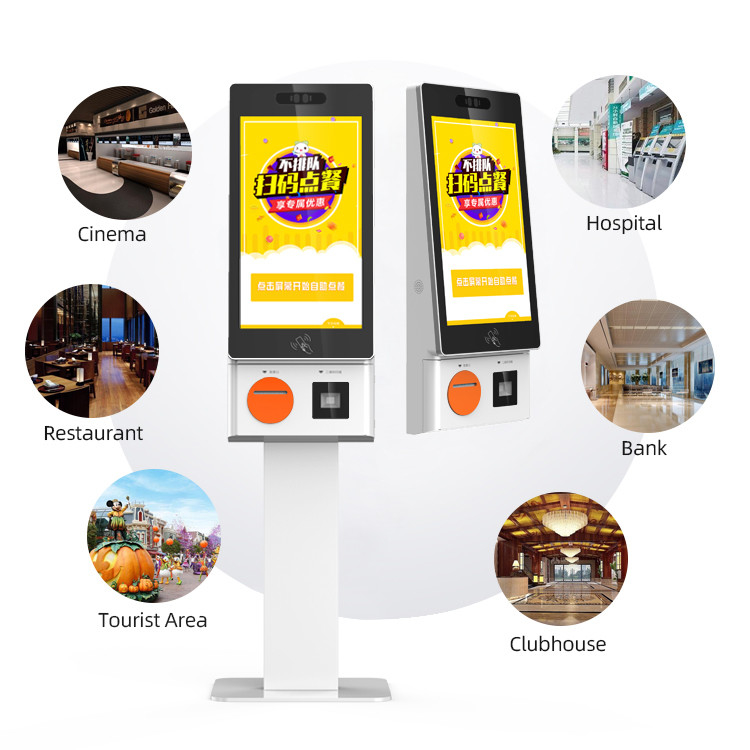





In today's fast-paced world, businesses are continually seeking ways to enhance efficiency and improve customer experience. Self ordering kiosk have emerged as a powerful solution, revolutionizing the way customers interact with services, particularly in the food and beverage industry. These kiosks streamline the ordering process, reduce wait times, and provide customers with greater control over their choices. In this article, we will explore the various benefits of self-ordering kiosks, including increased efficiency, enhanced customer satisfaction, cost reduction, improved order accuracy, and much more. Join us as we delve into these advantages and examine how self-ordering kiosks can positively impact businesses and their customers alike.
Self ordering kiosk has become increasingly popular in various industries, especially in the food and beverage sector. These innovative solutions streamline the ordering process, enhance customer experience, and improve operational efficiency. Here, we will explore the numerous benefits of implementing self-ordering kiosks in your business.
Increased EfficiencyEnhanced Customer ExperienceReduced Labor CostsImproved AccuracyUpselling OpportunitiesCustomer Data CollectionFlexibility and CustomizationReduced Queue Lengths |  |
Self ordering kiosk significantly enhance operational efficiency by allowing customers to place their orders directly, reducing the time staff spends taking orders. This leads to faster service and a smoother workflow, enabling employees to focus on food preparation and customer service rather than being tied up with the ordering process. With streamlined operations, businesses can serve more customers in a shorter amount of time, ultimately increasing revenue potential.
The introduction of self ordering kiosk elevates the customer experience by providing a user-friendly interface that allows customers to navigate menus easily. Customers can browse through options at their own pace, customize orders to their preferences, and view images of the food items, leading to informed decision-making. This interactive experience enhances satisfaction, as customers appreciate the ability to control their orders without feeling rushed or pressured.
By implementing self-ordering kiosks, businesses can significantly lower labor costs. With fewer employees required to handle order taking, businesses can allocate resources more efficiently. Staff can be redeployed to other areas, such as food preparation or customer service, where human interaction adds value. This not only reduces payroll expenses but also allows for better utilization of labor, leading to improved operational efficiency.
Self-ordering kiosks help minimize human error during the ordering process. Customers enter their orders directly into the system, reducing the chances of miscommunication that often occur between customers and staff. The kiosk displays the order summary for confirmation before processing, ensuring that customers receive exactly what they intended to order. This increased accuracy leads to higher customer satisfaction and reduces costs associated with order corrections and refunds.
Self-ordering kiosks can be programmed to suggest complementary items or upgrades during the ordering process, effectively capitalizing on upselling opportunities. By utilizing data-driven algorithms, kiosks can recommend add-ons, larger sizes, or meal combos, encouraging customers to spend more. This targeted marketing approach not only increases the average transaction value but also enhances the customer experience by providing personalized suggestions.
Self-ordering kiosks provide businesses with valuable insights into customer preferences and ordering habits through data collection. This information can be used to tailor marketing strategies, improve menu offerings, and enhance overall service. By analyzing customer behavior, businesses can identify trends, optimize inventory management, and make informed decisions that cater to their audience's needs.
Self-ordering kiosks offer a high level of flexibility and customization for both customers and businesses. Customers can easily customize their orders based on dietary preferences, allergens, and personal tastes. For businesses, kiosks can be programmed to adapt to seasonal menus, promotional items, and pricing changes without the need for extensive training or reprogramming of staff. This adaptability allows businesses to respond quickly to changing market conditions.
One of the most significant benefits of self-ordering kiosks is their ability to reduce queue lengths during peak hours. By allowing multiple customers to place their orders simultaneously, kiosks help alleviate congestion in busy restaurants. This leads to shorter wait times, enhancing the overall customer experience and encouraging repeat visits. A more efficient ordering process means customers can enjoy their meals sooner, ultimately contributing to a more positive dining experience.

Self-ordering kiosks enhance efficiency, improve customer experience, reduce labor costs, and increase order accuracy. They also provide upselling opportunities, facilitate data collection, and offer customization options while reducing queue lengths.
By allowing customers to place orders directly, kiosks streamline the ordering process, enabling staff to focus on food preparation and customer service. This leads to quicker service and higher customer turnover.
Yes, they provide a user-friendly interface that allows customers to browse menus, customize orders, and view food images, leading to a more satisfying and informative ordering experience.
Absolutely. With customers placing their own orders, businesses can operate with fewer staff members dedicated to taking orders, allowing for better resource allocation and lower payroll expenses.
Customers enter their orders directly into the system, minimizing miscommunication. The kiosks confirm the order summary before processing, ensuring customers receive what they intended to order.
Kiosks can be programmed to suggest add-ons or upgrades during the ordering process, encouraging customers to enhance their meals and increasing the average transaction value.
Kiosks can collect valuable customer data such as ordering habits, preferences, and peak times. This information helps businesses tailor marketing strategies and improve menu offerings.
Yes, kiosks offer high flexibility for customers to customize their orders based on dietary needs and preferences. Businesses can also easily update menus and pricing as needed, ensuring they remain relevant to customer demands.
Address: No. 99-15, Fuan intelligent manufacturing Industrial Park, Dayang Road, Fuhai Street, Baoan District, Shenzhen, China